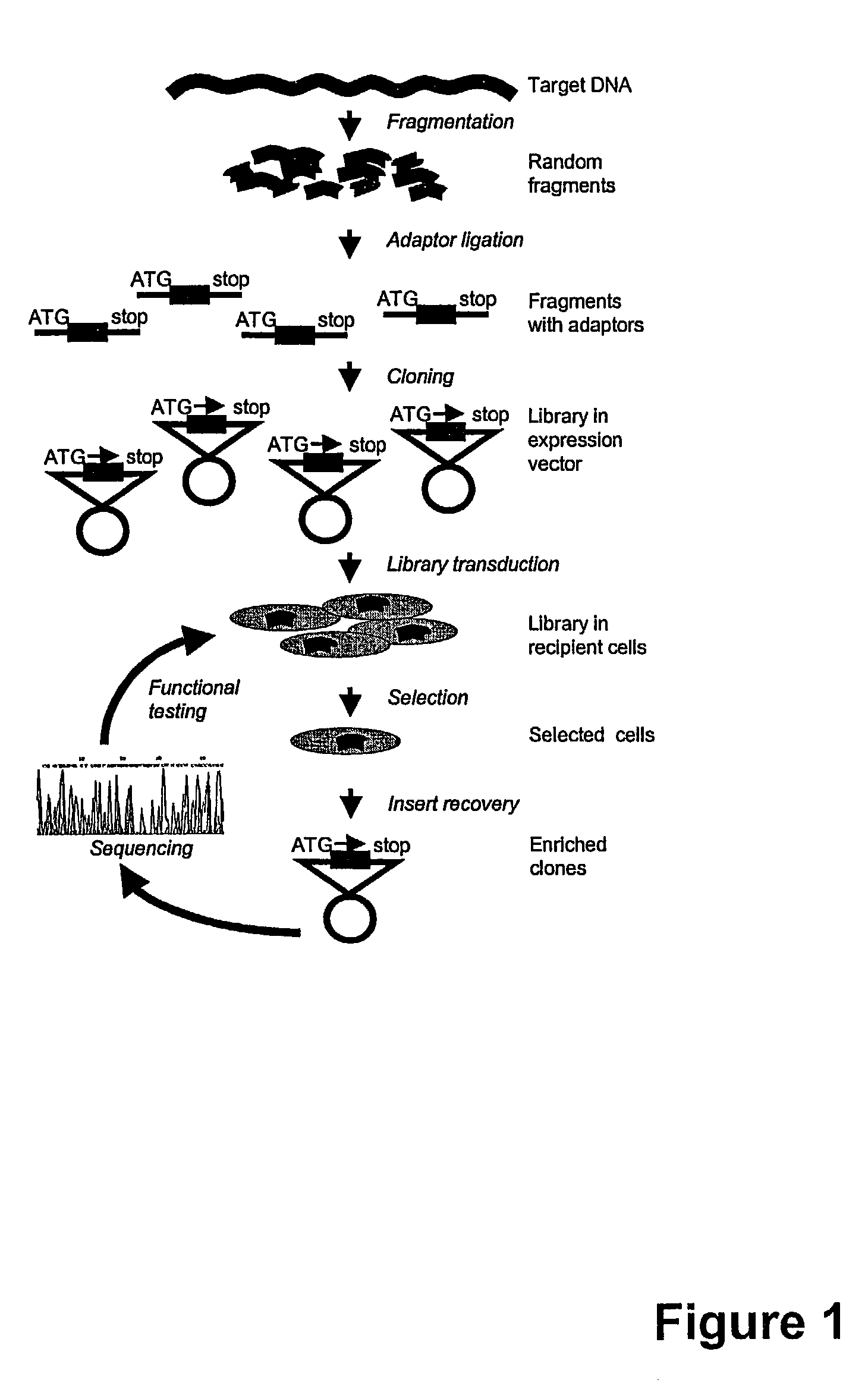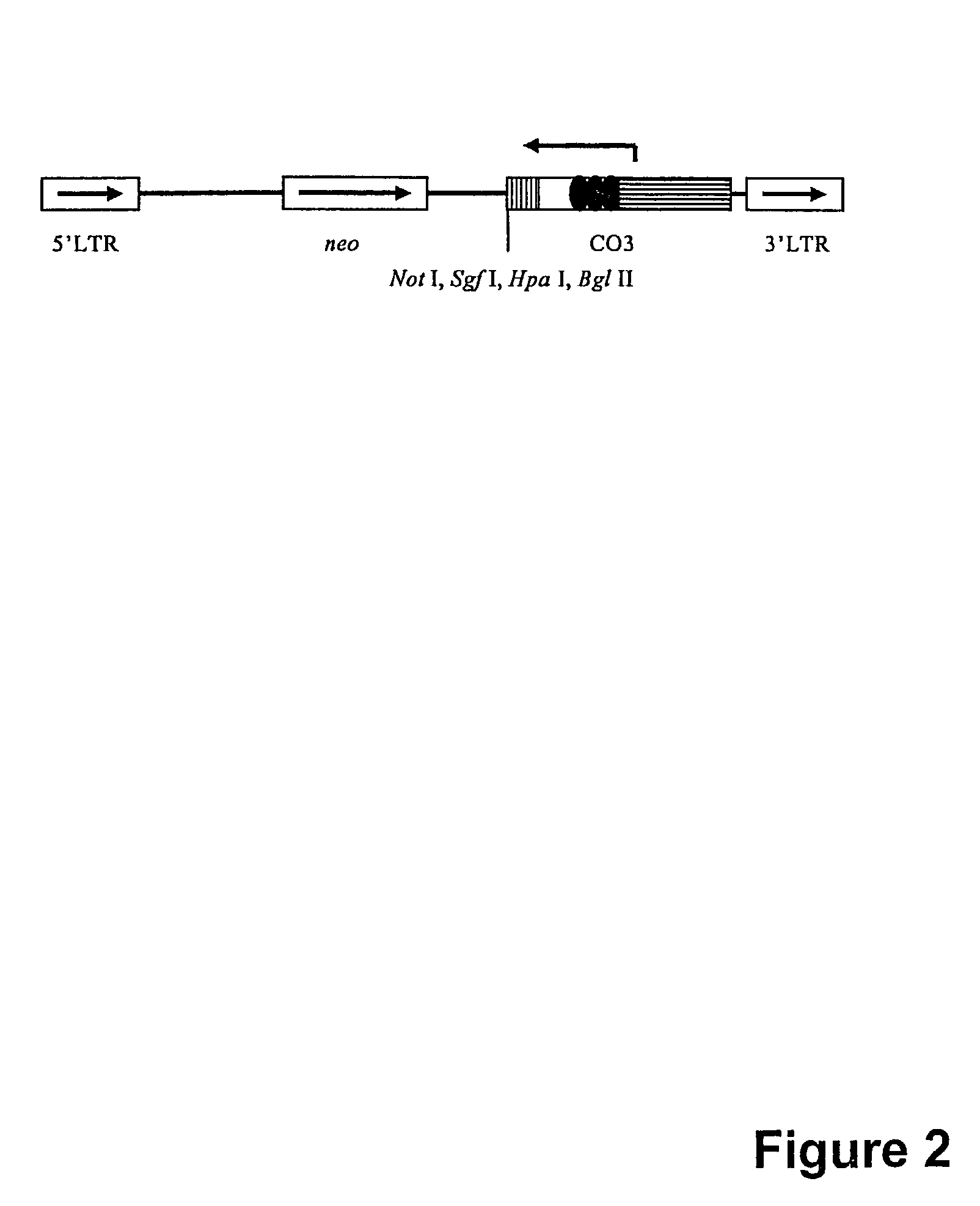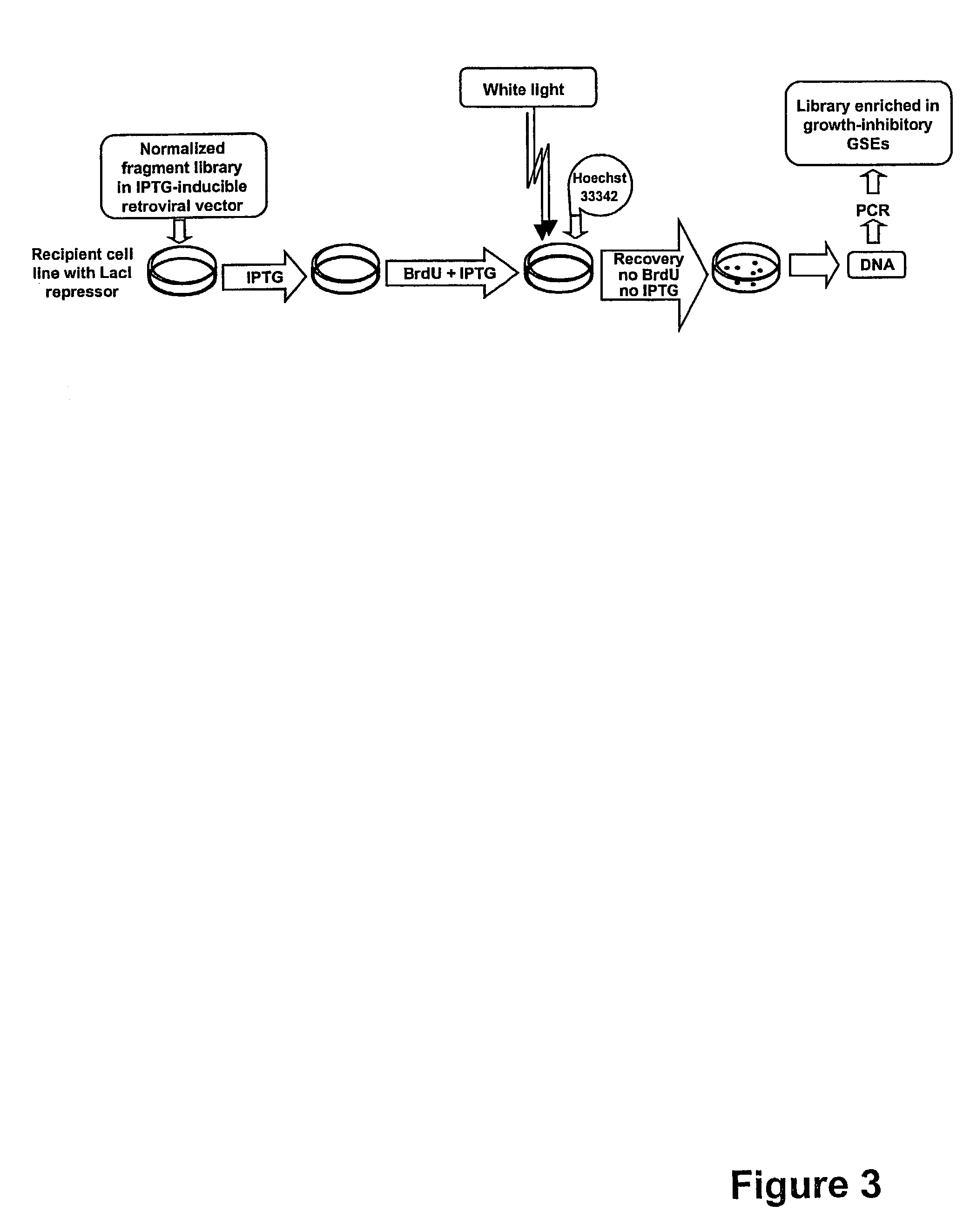Reagents and methods for identifying gene targets for treating cancer
a gene target and gene technology, applied in the field of reagents and methods for identifying gene targets for treating cancer, can solve the problems of limited number of cells, inability to efficiently use the method disclosed in the art for transducing random fragment libraries, abnormal functions of activated oncogene products, etc., to achieve the effect of facilitating the development of clinically useful gene-targeting anticancer drugs and preventing the growth of cancers
- Summary
- Abstract
- Description
- Claims
- Application Information
AI Technical Summary
Benefits of technology
Problems solved by technology
Method used
Image
Examples
examples
1. Production of Normalized Tumor Library from MCF-7 Human Breast Cancer Cells
[0098]A normalized cDNA fragment library was generated from MCF-7 breast carcinoma cell line (estrogen receptor positive, wild-type for p53; ATCC Accession No. HTB22, American Type Culture Collection, Manassas, Va.). Poly(A)+RNA from MCF-7 cells was used to prepare a population of normalized cDNA fragments through a modification of the procedure described in Gudkov and Roninson (1997). Briefly, RNA was fragmented by heating at 100° C. for 9 minutes. Double-stranded cDNA was generated from this heat-fragmented RNA using the Gibco Superscript kit with a reverse-transcription primer (5′-GGATCCTCACTCACTCANNNNNNNN-3′; SEQ ID NO. 1). This primer contains a random octamer sequence at its 3′ end for random priming, and it carries a tag (termed “stop adaptor” in its double-stranded form) that provides TGA stop codons in all three open reading frames, together with BamHI restriction site. PCR assays were used to est...
PUM
| Property | Measurement | Unit |
|---|---|---|
| Fraction | aaaaa | aaaaa |
| Fraction | aaaaa | aaaaa |
| Fraction | aaaaa | aaaaa |
Abstract
Description
Claims
Application Information
 Login to View More
Login to View More - R&D Engineer
- R&D Manager
- IP Professional
- Industry Leading Data Capabilities
- Powerful AI technology
- Patent DNA Extraction
Browse by: Latest US Patents, China's latest patents, Technical Efficacy Thesaurus, Application Domain, Technology Topic, Popular Technical Reports.
© 2024 PatSnap. All rights reserved.Legal|Privacy policy|Modern Slavery Act Transparency Statement|Sitemap|About US| Contact US: help@patsnap.com










